World War II Online: Blitzkrieg Preview
We've been given exclusive access to the closed beta, and we're back from the front lines with new details about this game.
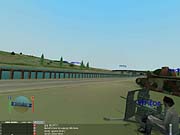
Simulation gamers have long fantasized about what it would be like to fight not just a scenario or campaign, but an entire war in their favorite vehicles. Likewise, more than a few wargamers have probably imagined getting involved in their favorite historical game on a personal level, by jumping in a tank or taking off in an aircraft and heading for the front. While flight sims and tank sims do this to some degree, the limited campaigns in these games restrict you to one level of involvement in a given battle or series of battles. Massively multiplayer games like Aces High use historical units and are very accurate simulations, but they are missing a historical basis for their ongoing campaigns. What would it be like to harness the power of massively multiplayer technology to fight a continuous, online war based closely on history, not just in terms of units but as an actual re-creation of World War II? Playnet and Strategy First are going to be the first to find the answer to that question.
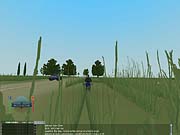
Last November, Bedford, Texas-based Playnet Inc. struck a deal with Canadian publisher Strategy First to publish its massively multiplayer offering, World War II Online. WWII Online is being developed by Playnet's Cornered Rat development group and could very possibly rewrite the standard for interactive military simulations.
The goal of World War II Online is stunning in scope: Simply put, it hopes to re-create the entire second World War in every theater of operation across the globe so that you can hop into combat and join the war in anything from a European hamlet to a Pacific island jungle. All of the major nations will be represented, with equipment and ordnance appropriate to the period of the war being fought at that time. This means that weapons will be introduced along historical lines. According to Playnet's Rodney "Hatch" Hodge, "We plan to start with an initial vehicle/weapon set based on the most commonly used by the European combatants in the spring of 1940. From there, we will be adding and refining other items in the first theater, and in the following theaters as the war progresses in both a historical and specialization format as development allows. This will proceed over the next couple of years until all of the different theaters are added and fleshed out. Then we will make successive passes through each time period and theater until most all of the weapons, vehicles, etc. that were used in the war are available for the players to use.
"Initially the whole thing will start with Blitzkrieg 1940. From there we go to late 1945. After that has all been fleshed out (several years down the road), it could stop there or we may try expanding it somehow or another, or maybe let the players decide who they wish to be allied with. It will probably be based on what the WWIIOL community wants to try next."
We got an extended look at the beta and came away quite impressed with what the team is trying to accomplish.
The Choke Point System
For the purposes of World War II Online, it would obviously be impractical to simply model the world in an open, continuous fashion and let players drive their tanks and fly their aircraft all over the map, since this would resemble World War II EverQuest rather than any actual simulation of historical combat. Instead, the game system is based on an interconnected series of "choke points" (CPs) which represent strategic locations that can't be bypassed. CPs can be military facilities or civilian/military complexes and can range from large cities with factories, airbases, and army bases to a simple infantry barracks.
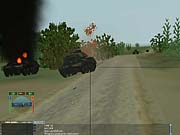
The CP system will govern the movement of troops and formulation of strategy, since capturing one choke point will be necessary to allow access to the choke points beyond it. Each choke point is owned by one of the two sides (and actually by a particular nationality, which governs the types of units that are available there), which controls all of that CP's facilities. If the enemy captures a facility in a friendly CP, the CP becomes "contested" and loses its supply capabilities. Also, its vulnerable facilities like airfield and ports shut down. Once an enemy controls all the army bases at a choke point, that CP becomes enemy controlled and can spawn infantry units. Once all the facilities have been captured, it becomes enemy owned and functions like any other owned CP. Facilities are represented by buildings, and these buildings are denoted by flags to show their importance and control state.
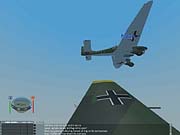
Travel between some choke points can be quite long, since the map is designed to reflect actual strategic considerations due to the terrain in a particular area. Thus, some parts of Russia, especially, may have long travel times between choke points. To avoid a situation where you are spending most of your time traveling to and from the battle and only a little time fighting, widely separated choke points will have associated forward bases (FBs), which will open up when connected CPs are owned by opposite sides. This will let you quickly spawn close to a distant but connected enemy CP rather than having to spend large amounts of time getting there.
While the CPs are the basis for strategy because they channel movement and are associated with important military targets, the terrain between CPs is continuous, so that you could spawn at a distant CP and travel to the front from some distance away. This is the case when flying aircraft, since airfields are very vulnerable to being shut down by enemy attack. Active airbases will most likely be behind the front, giving World War II Online a sense of depth and not just a disconnected series of battles between the two closest CPs.
The CP system allows for some interesting treatment of large cities. Some cities will be large enough to split into several CPs, making it possible for one side to control one part of a city while the other side retains control of the rest. You only have to think of Stalingrad to imagine a situation in which one large urban area is split into different areas of control, with enemy units in close proximity to one another and fighting continuously at close quarters.
Mission Command
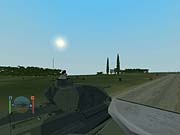
With a huge map, hundreds of choke points, a plethora of different vehicles, and a large population of gamers trying to do their own thing, modeling an army's organization and objective-oriented operations may seem difficult. Engagements will be driven by mission assignments, so you won't just be jumping in a tank and driving off to find the enemy. Just as CPs will regulate movement across the map, missions will determine in which direction that movement will take place.
- Point Attack: Destroy or capture a specific enemy target.
- Area Attack: Destroy or capture enemy facilities within a designated area.
- Point Defense: Defend a specified friendly facility from the enemy attacks.
- Area Defense: Defend friendly facilities within a specified area from enemy attacks.
- Recon: Locate and photograph enemy targets.
- Escort: Protect friendly planes, tanks or ships that are on attack or re-supply missions.
- Re-Supply: Transport supplies to friendly units in the field.
These missions can be assigned in different contexts and combinations so that a point-defense mission could actually be an offensive mission for a squadron of aircraft that was ordered to keep the sky clear over a target while ground forces went in and captured it.
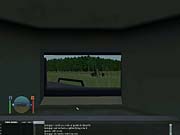
The assignment of such missions will be up to players who have gained sufficient rank (through achieving missions set by others) to start assigning missions on their own. Missions will have various priorities, and assigning a high-priority mission will cost more "mission points" than a low-priority one. You will have only a certain number of mission points to assign, so working in tandem with fellow officers will be crucial to your side's success. Targets will also have a point value based on their identity and how many missions they have assigned to them, and the most points for successfully completing a mission will come from those that are high priority and executed against high-value targets. As you rise in rank, you'll gain the ability to assign more and more missions.
Because the mission-assignment system depends so much on officers being online to create missions for players, World War II Online will also have an automated mission-allocation system that will generate missions within the context of the current strategic situation so that the battle is always progressing. You will even be able to form squads and carry out missions together. Squad leaders will have the ability to assign missions to their squads. These missions will confer no rank points but will provide an easy way for groups of gamers to organize, connect, and play together.
Vehicles
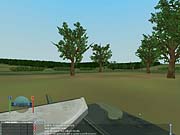
The focus of World War II Online is, of course, the vehicles and units. The game models a large number of unit types, including tanks, aircraft, antitank and antiaircraft guns, halftracks, trucks, and even individual infantry. In other words, you can take to the field as a tank commander, a bomber pilot, a truck driver, or a lone infantryman. The number and type of units available at a given CP will be determined by the facilities present there. Obviously, not everyone will be able to jump in a Panther tank and attack Moscow.
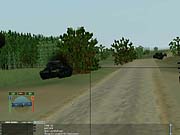
Tanks and other ground vehicles seemed to be the most popular units so far in the beta, and for good reason. The level of simulation is quite detailed in terms of highlighting the differences between various tanks that are so often mentioned in history books but that don't really come across as well as when you see them for yourself. The French Char B1-bis tank was a monster on the western front, with both a 75mm main gun and a 47mm secondary gun, as well as heavier armor than its German counterparts. However, once you get in the tank itself, you realize how difficult it must have been for French tankers to use these advantages effectively. The Char B1-bis is slow, cumbersome, and hard to see out of. Whereas a Panzer III commander can pop out of his turret any time he likes to get the lay of the land, the Char B1-bis commander is stuck looking out his vision slits or out the back hatch. In practice, it's much easier to maneuver a Panzer III than its French counterpart, and nowhere does this come across better than in the game when you're trying to figure out where you are and where your friendly units are, while at the same time trying to hunt the enemy. These are aspects of armored combat that don't have the same impact in history books as when you're peering through the vision slit on your monitor, trying to track down that Panzer you saw a second ago that seems to have vanished. For these reasons and others, German tank commanders will fight with a different style than the Allies. Of course, you can't just hang out the hatch all the time as though you are on a sightseeing tour. Exposed tank crews are very vulnerable and can be picked off by a single soldier quite easily.
Infantry has the potential to be one of the most intriguing elements of World War II Online, but in the current build it's also the least developed. For the period of time being simulated in the beta, this isn't a big problem, as infantry on the western front in 1939-40 actually had very little antitank capability except for risky close assault maneuvers or with antitank rifles that were largely ineffective except against lightly armored portions of a tank from close range (usually the rear). Playing the beta as an infantryman was a harrowing experience. The game did an excellent job of conveying just how vulnerable and isolated a soldier must have felt on a battlefield with aircraft and armored vehicles all around.
Wings Over World War II Online
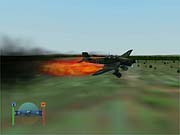
The most familiar part of World War II Online is undoubtedly the aircraft component, and it's currently one of the most popular. Aircraft like the Me-109, Spitfire, and (to a lesser extent) the Ju-87 Stuka have all been modeled before in various flight sims, but World War II Online gives you a chance to fly these aircraft in a historical context unlike any other. As a Messerschmidt pilot, you could rack up kills on the western front during the campaign against France and Britain and then transfer to the eastern front as a high-ranking fighter pilot with the power to assign missions to various air groups. This kind of historical progression adds an element of role-playing that exceeds even that seen in dynamic campaigns in sims like Battle of Britain because the arena is truly global rather than restricted.
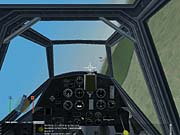
It would be premature to draw conclusions about the flight models for the aircraft since the game is currently very much a work in progress, but some of the issues that have come up during development point to the direction Cornered Rat is taking with the game. Notable for its absence in the current view system is a "six o'clock" view for looking directly behind you. The closest you can get to looking behind your back is a view that is 45 degrees from rearward, or 135 degrees to either side. This is apparently being done for realism purposes since when you're strapped into an aircraft's pilot seat, it's essentially impossible to turn your head all the way around. (Try it yourself by sitting in a high-backed chair and trying to look directly behind you while keeping both of your shoulders touching the chair.) So far, Cornered Rat has resisted calls from some beta testers for a direct 360-degree view, although there will likely be a "bump" key added to let you raise your head to look around the canopy railings. This is an old flight sim debate, but the fact that it has surfaced in World War II Online and that Cornered Rat is taking an "immersion/realism" approach to the question suggests that instead of just making a persistent simulation with a World War II setting, Cornered Rat will be striving to make the entire experience as authentic as possible via keyboard and monitor.
There is a similar issue with regard to the cockpit gauges. The current cockpit scheme requires you to access a separate view to look at your gauges, which aren't legible in the normal cockpit view. This is another immersion feature that emphasizes that you can't effectively monitor the outside environment and read your instrument dials at the same time. While this is certainly a rather unorthodox view system, it is consistent with the developers' goal of making the game immersion a primary goal. How well this will sit with flight sim enthusiasts who have become used to standard simulation conventions will be interesting to see.
Final Thoughts
Perhaps the most intriguing part of World War II Online, though, is that you can actually fight cooperatively with other players within a single vehicle. Any vehicle with more than one crew position can be manned by different players together. This includes everything from driver/commander teams in a tank to pilot/bombardier crews in the Ju-87 Stuka dive-bomber. Flying the Stuka alone is enjoyable enough, but dive-bombing with a teammate adds an element that is hard to re-create in any other game, since the mission you accomplish together becomes part of your side's success in the larger war. This cooperative element will be widespread in the game, since almost all the vehicles (except the single-seat fighters) have room for multiple crewmembers, and infantrymen will naturally fight in groups since they are very vulnerable on their own.
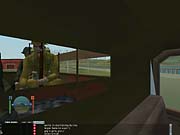
In its current beta state, World War II Online portrays part of the western front in 1940, and beta testers are hard at work testing the game with the weapons of this period. World War II Online's persistent and historical nature means that you decide the course of the war: If the French capture Berlin in 1940, the game is over. While the game's framework should ensure that because of existing historical unit strengths this should be quite difficult to achieve, it highlights the fact that as different theaters open up, they essentially become blank canvases on which you will create your own versions of World War II.
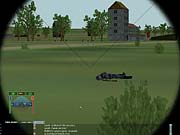
World War II Online is a hugely ambitious project, and the mission system will need a lot of careful play-testing and tuning to achieve the desired result of being the primary control system to drive the game's campaigns. Unit strengths and availability will have to be tweaked so that one type of unit is the overwhelming choice and the others are seen as inferior. Most of all, for a persistent war being fought 24 hours a day all over the world, World War II Online will have to attract a critical mass of players so that theaters don't stagnate for lack of player participation.
That may seem like a tall order, but from our playing of the beta, it looks like Playnet has a solid foundation in place and a keen sense of where it wants to go with the design. The simulation aspects of the various units are being carefully considered and developed, and the beta testers are bringing up for discussion all sorts of simulation and gameplay issues that have to be conquered to make World War II Online a success. It's a game that has a lot of potential, and it is almost through the development process. With the right design decisions and a bit of luck it could attract a wide spectrum of gamers to participate in something unprecedented. World War II Online is currently scheduled for release in the coming summer months. We'll bring you more details of this promising role-playing game from E3, so stay tuned.
Got a news tip or want to contact us directly? Email news@gamespot.com
Join the conversation